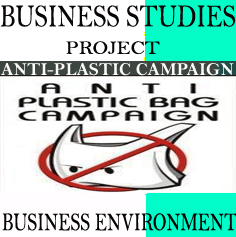We are sharing project on soft drink Industry, Coca Cola, Pepsi, Fanta etc. for Business studies topic on business environment, Class 12, CBSE. The project is based history of famous soft drinks brand in India, their entry in country, exit and after effects. Get the full project Business Environment project on soft drink industry
BUSINESS ENVIRONMENT
Business environment consists of all those factors that have a bearing on the business. Business environment is broadly categorized into two categories: Internal Environment and External Environment
Benefits of understanding business environment:
- First mover advantage
- Customer Focus
- Continuous Learning
- Strategy Formulation
SOFT DRINK INDUSTRY IN INDIA -INTRODUCTION
Soft drinks are known as non-alcoholic beverage containing syrup essence or fruit concentrates that are mixed with carbonated water. Soft drinks are thirst quencher, hygienic and a drink of enjoyment. Soft drinks industries are quite old. Today Pepsi and Coca-Cola are the famous brands, and both are multinational.
TOP SOFT DRINK BRANDS IN INDIA
- Pepsi- Pepsi is a hundred-year-old brand loved by over 200 million people worldwide. The largest single selling soft drink brand in India.
- Coca Cola- It was initially introduced in the market as a patent medicine. Coca Cola is simply referred to as “Coke”, which became a registered trademark by The Coca Cola Company in the United States in 1944.
- Maaza- Mango drinks currently account for 90% of the fruit juice market in India. Maaza currently dominates the fruit drink category and competes with Pepsi’s Slice brand of mango drink and Frooti, manufactured by Parle Agro.
- Thums Up- Its strong and fizzy taste makes it unique carbonated Indian cola. As of February 2012, Thums Up is the leader in the cola segment in India, commanding approximately 42% market share and an overall 15% market share in the Indian aerated waters market.
HISTORY OF COLA
The Coca-Cola Company re-entered India through its wholly owned subsidiary, Coca-Cola India Private Limited and re-launched Coca-Cola in 1993 after the opening up of the Indian economy to foreign investments in 1991. Today, this brand is the leading brands in most beverage segments. The Coca-Cola Company’s brands in India include Coca-Cola, Fanta Orange, Limca, Sprite, Thums Up, Burn, Kinley, Maaza, Minute Maid Pulpy Orange, Minute Maid Nimbu Fresh and the Georgia Gold range of teas and coffees and Vitingo.
ENTRY AND EXIT OF COLA
Coca-Cola came to India in the year 1956. Since India had not any foreign exchange act, Coca-Cola made huge money operating under 100% foreign equity. A new Indian foreign exchange act was implemented in the year 1974. After that government instructed Coca-Cola to either write up a new plan or to leave the country. In 1977, The Janta Party came into the power and stressed that Coca-Cola should either accept the foreign exchange act or leave the country.
RE-ENTRY OF COCA COLA
Coca Cola has re-entered India in 1993, giving its competitor Pepsi Co a huge four year heads up into the Indian market which used this opportunity to capture much of the Indian consumer’s imagination. Coca-Cola re-entered after government approval, due to the new liberalization policies that were coming to India.
COCA COLA NOW
Reaching to the masses and increasing the per capita consumption of cola in the massive landscape of India was the challenge for coke during this point of time. The rural market of India represented a major opportunity (96% of Indian population) for market penetration and a battleground for market dominance. Its mantra was “Within the arm’s reach of desire”.
ABOUT PEPSICO
PepsiCo entered India in 1989 and in a short period, has grown into one of the largest food and beverage businesses in the country. PepsiCo growth in India has been guided by its global vision of “Performance with Purpose”. This means that while businesses maximize shareholder value, they have a responsibility to all the stakeholders, including the communities in which they operate, the consumers they serve and the environment whose resources they use.
FACTORS RESPONSIBLE FOR ENTRY OF PEPSI IN INDIA
- The company knew that the political and social problems that plagued Punjab were an extremely sensitive issue for India in the 1980s. Pepsi Co’s decision to link its entry with the development and welfare of the state was thus a conscious one, aimed at winning the government over.
- The company claimed that it would play a central role in bringing about an agricultural revolution in the state and would create many employment opportunities.
- To make its proposal even more lucrative, PepsiCo claimed that these new employment opportunities would tempt many of the terrorists to return to society
THE LINKAGES
- PRESENCE OF PESTICIDES
In 2003, the Centre for Science and Environment (CSE) findings stirred the beverage industry in India. CSE claimed to find dangerous levels of pesticides in all the 57 samples of 11 soft drinks brands collected by the organization from 25 different manufacturing units of Coca-Cola and PepsiCo spread over 12 states. The study found a cocktail of three-five different pesticides in all the samples – on an average 24 times higher than norms laid down by government-run Bureau of Indian Standard (BIS).
- EFFECT ON INDUSTRY
Both Coke and Pepsi published newspaper advertisements to spread message against the report. The companies attacked the credibility of the CSE and their lab results, citing regular testing at independent laboratories proving the safety of their products
- GROUND WATER CRISIS
Coca-Cola was recently accused of ground water depletion in many areas of the country. Coca-Cola’s bottling operations – which extract hundreds of millions of liters of water from the groundwater resource – have significantly worsened the water crisis as groundwater levels have dropped sharply since Coca-Cola started its operations.
CONCLUSION
A positive change in Business Environment leads to growth of business while a negative change leads to decline in business. A business should identify the sign of threats to protect itself from negative change while it should identify the early opportunities to get maximum benefit out of it.
-
 Formation Of Partnership Project800.00₹
Formation Of Partnership Project800.00₹ -
 Economics Project on Digital India800.00₹
Economics Project on Digital India800.00₹ -
 ECONOMICS PROJECT ON BITCOIN800.00₹
ECONOMICS PROJECT ON BITCOIN800.00₹ -
 ECONOMICS PROJECT ON WASTE MANAGEMENT800.00₹
ECONOMICS PROJECT ON WASTE MANAGEMENT800.00₹ -
 ECONOMICS PROJECT ON DISINVESTMENT800.00₹
ECONOMICS PROJECT ON DISINVESTMENT800.00₹ -
 ECONOMICS PROJECT ON TELECOMMUNICATION800.00₹
ECONOMICS PROJECT ON TELECOMMUNICATION800.00₹ -
 ECONOMICS PROJECT ON FESTIVE ECONOMICS800.00₹
ECONOMICS PROJECT ON FESTIVE ECONOMICS800.00₹ -
 ECONOMICS PROJECT COVID- 19800.00₹
ECONOMICS PROJECT COVID- 19800.00₹ -
 ECONOMICS PROJECT ON PUBLIC PRIVATE PARTNERSHIP (PPP)800.00₹
ECONOMICS PROJECT ON PUBLIC PRIVATE PARTNERSHIP (PPP)800.00₹
-
 Business Studies Project on Anti Plastic Campaign -Business EnvironmentProduct on sale400.00₹
Business Studies Project on Anti Plastic Campaign -Business EnvironmentProduct on sale400.00₹ -
 Business Studies Project on changes in Technological Environment – Business Environment600.00₹
Business Studies Project on changes in Technological Environment – Business Environment600.00₹ -
 Business Studies Project on Women Empowerment-Business EnvironmentProduct on sale400.00₹
Business Studies Project on Women Empowerment-Business EnvironmentProduct on sale400.00₹ -
 Business Studies Project on Child Labour Laws -Business EnvironmentProduct on sale400.00₹
Business Studies Project on Child Labour Laws -Business EnvironmentProduct on sale400.00₹ -
 Business Studies Project On Packaging , Changes in Past600.00₹
Business Studies Project On Packaging , Changes in Past600.00₹ -
 Business Studies Project on Soft Drink Industry Coca Cola ,PepsiProduct on sale800.00₹
Business Studies Project on Soft Drink Industry Coca Cola ,PepsiProduct on sale800.00₹